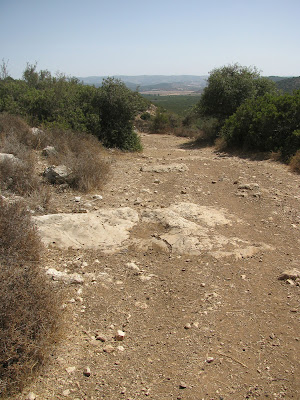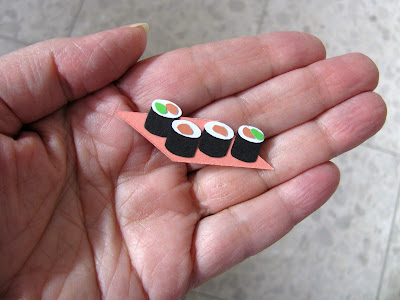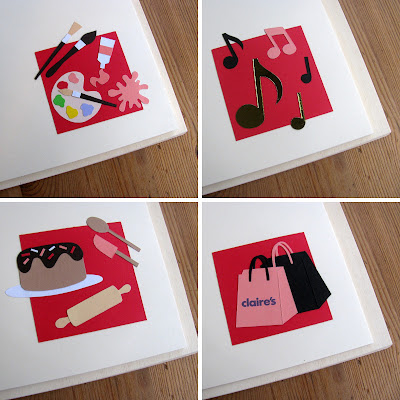Khirbet Qeiyafa is located on a hill north of the Elah Valley, in between
Tel Azekah
and
Tel Socho, an area identified with the legendary clash between David and Goliath. The
site of Khirbet Qeiyafa was first surveyed in the 1860s by
Victor Guérin,
a French explorer and amateur archaeologist, who reported the
presence of a village on the hilltop. In 1875, British surveyors noted only
stone heaps at Kh. Kiafa. In 1932,
Dimitri Baramki,
chief archaeologist at the
Department of Antiquities of the Government of Mandatory Palestine, reported the site to hold a 35 square metre watchtower.


New excavations took place at Khirbet Qeiyafa between 2007 and 2013 by a
team from the Hebrew University in Jerusalem. The excavations unearthed a
round fortress that dates to the 10th century BCE. Some suggested it to be
an administrative building built by, or in the time of the legendary King
David and where he might have lodged at some point. It was also posited
that Qeiyafa might be biblical
Sha'arayim (a name
meaning "two gates," and indeed Qeiyafa has two gates). Sha'arayim is
mentioned in the description of the battle between David and Goliath.
After David killed Goliath in the Elah Valley, the Philistines retreated
through the valley:
"Then the men of Israel and Judah surged forward with a shout and
pursued the Philistines to the entrance of Gath and to the gates of
Ekron. Their dead were strewn along the Sha'arayim road to Gath and
Ekron."
(Book of Samuel 1, chapter 17, verse 52).
Another opinion was that maybe it was King Saul's stronghold, where young
David left his pack (Samuel 1, chapter 17, verse 20).
It seems that Khirbet Qeiyafa was occupied multiple times. Archaeologists
have identified four main occupational phases: the Middle Bronze Age, the
late Iron Age, the late Persian period and the Hellenistic period. In the
Byzantine period, a wealthy farmer built a home on top of the late Iron
Age palace which cut the older structure in two.
Excavations have yielded a wealth of finds, including clay pots of various
types, metal weapons and other clay cultic objects. Three small portable
shrines were also discovered. The smaller shrines are boxes shaped with
different decorations showing impressive architectonic and decorative
styles. One of the shrines is decorated with two pillars and a lion.
In addition, hundreds of bones from goats, cattle, sheep and fish have been
found. Carbon dating and the absence of pig bones indicates that Qeiyafa
might be Israelite Sha'arayim since the Israelites did not eat pig.
An ostracon (an inscription-bearing piece of pottery) written in
early Proto-Canaanite was unearthed at the site. The inscription was made in ink,
consisting of five left-to-right lines. Archaeologists excavating the
site and other scholars think that this is the earliest Hebrew
inscription ever found, dating it to the 10th century BCE at the latest.
The inscription is fragmented, and apparently discusses social
commandments. In 2010 the ostracon was placed on display in the Iron Age
gallery of the Israel Museum in Jerusalem.
In 2012 an inscription in Canaanite alphabetic script was found on the
shoulder of a ceramic jar. The inscription read "ʾIšbaʿal son of Beda" and
was dated to the late 11th or 10th century BCE. This was the first time
that the name Eshba'al had appeared on an ancient inscription in the
country. Eshba'al Ben Shaul, who ruled over Israel at the same time as
David, is known from the Bible. The fact that the name Eshba'al was
incised on a jar suggests that he was an important person.
The site covers nearly 6 acres and is encircled by a 700 metre long city
wall constructed of stones each weighing four tons and more. The casemate walls (a pair of walls with a chamber in between) were built at the
end of the 11th century BCE, in the same manner as the walls of Hazor, an archaeological site located north of the Sea of Galilee, and Tel Gezer. Two gates were discovered in the wall, one on the western side of the
city - it has been partially recreated - the other on the south-east. At the
centre of the site is a large rectangular enclosure with spacious rooms that
were likely used as cultic shrines. On the southern slope there are Iron Age
rock-cut tombs.
Khirbet Qeiyafa, which may mean "the place with a wide view", has been one
of the most debatable and polarizing archaeological sites in Israel in the
last decade. Whether the ruins are indeed a fortress built in the time of
King David, Biblical
Sha'arayim or King
Saul's stronghold, or if they are dated to 1050–970 BCE, or between 1050 and
915 BCE, thanks to the excavations of this ancient city, our understanding
of the Kingdom of Israel in the 10th century BCE has deepened.
* This post has been shared on The Good. The Random. The Fun., Wordless Wednesday (on Tuesday) and My Corner of the World.





















.png)





























































